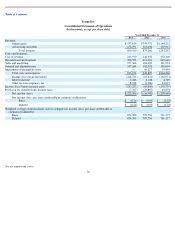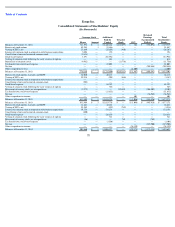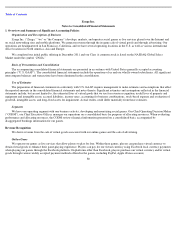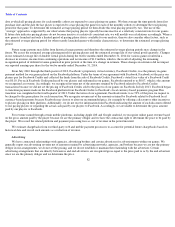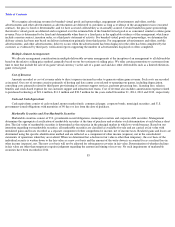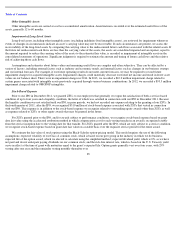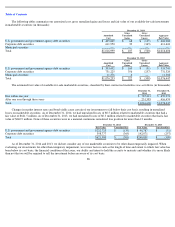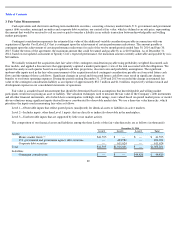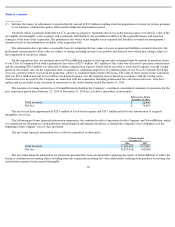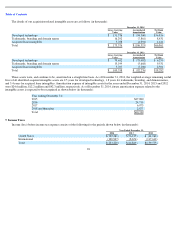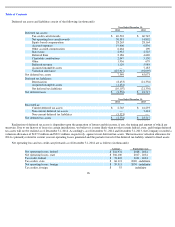Zynga 2014 Annual Report Download - page 89
Download and view the complete annual report
Please find page 89 of the 2014 Zynga annual report below. You can navigate through the pages in the report by either clicking on the pages listed below, or by using the keyword search tool below to find specific information within the annual report.
Table of Contents
36 months. The options have a contractual term of 10 years. If any of the assumptions used in the Black-Scholes model changes significantly,
stock-based expense for future awards may differ materially compared with the awards granted previously. We record stock-based expense for
stock options on a ratable basis over the vesting term.
For stock options issued to non-employees, including consultants, we record expense related to stock options equal to the fair value of the
options calculated using the Black-Scholes model over the service performance period. The fair value of options granted to non-employees is
remeasured over the vesting period and recognized as an expense over the period the services are received.
Stock-based expense is recorded net of estimated forfeitures so that expense is recorded for only those stock-based awards that we expect
to vest. We estimate forfeitures based on our historical forfeiture of equity awards adjusted to reflect future changes in facts and circumstances,
if any. We will revise our estimated forfeiture rate if actual forfeitures differ from our initial estimates.
Income Taxes
We account for income taxes using an asset and liability approach, which requires the recognition of taxes payable or refundable for the
current year and deferred tax liabilities and assets for the future tax consequences of events that have been recognized in our financial statements
or tax returns. The measurement of current and deferred tax assets and liabilities is based on provisions of enacted tax laws; the effects of future
changes in tax laws or rates are not anticipated. If necessary, the measurement of deferred tax assets is reduced by the amount of any tax benefits
that are not expected to be realized based on available evidence. We account for uncertain tax positions by reporting a liability for unrecognized
tax benefits resulting from uncertain tax positions taken or expected to be taken in a tax return. We recognize interest and penalties, if any,
related to unrecognized tax benefits in income tax expense.
The Company has presented certain items in the income tax footnote net of their respective offsetting items in an effort to provide
additional clarity and transparency as to the primary drivers of the income tax provision. The comparative information for prior periods has been
adjusted to reflect the impact of this change.
Foreign Currency Transactions
Generally, the functional currency of our international subsidiaries is the U.S. dollar. For these subsidiaries, foreign currency denominated
monetary assets and liabilities are remeasured into U.S. dollars at current exchange rates and foreign currency denominated nonmonetary assets
and liabilities are remeasured into U.S. dollars at historical exchange rates. Gains or losses from foreign currency remeasurement and settlements
are included in other income (expense), net in the consolidated statements of operations. For foreign subsidiaries where the functional currency
is the local currency, we use the period-end exchange rates to translate assets and liabilities, and the average exchange rates to translate revenues
and expenses into U.S. dollars. We record translation gains and losses in accumulated other comprehensive income (loss) as a component of
stockholders’ equity.
Concentration of Credit Risk and Significant Customers
Financial instruments, which potentially expose us to concentrations of credit risk, consist primarily of cash and cash equivalents, short-
term and long-term marketable securities, and accounts receivable. Substantially all of our cash, cash equivalents and short-term marketable
securities are maintained with two financial institutions with high credit standings. We perform periodic evaluations of the relative credit
standing of these institutions.
Accounts receivable are unsecured and represent amounts due to us based on contractual obligations where a signed and executed contract
or click-through agreement exists. In cases where we are aware of circumstances
86


